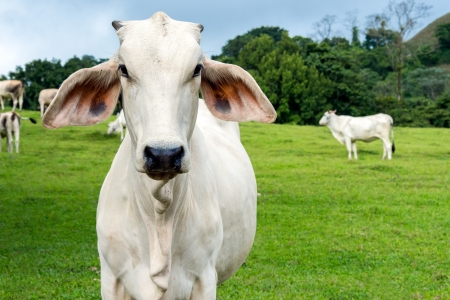The Brazilian Beef Cattle Industry
– During the last five years the Brazilian beef industry has been the largest exporter of beef globally and one of the biggest producers of beef in general. The Brazilian beef industry is extremely important to the South American country. Beef also plays a huge role in employment creation for Brazil as well as contributing largely to their exports.
Some Key Figures
- One in every five pounds of beef originates from Brazil
- Export volume in 2012: 264,822 Tons
- Export value in 2012: $1,220,316 Million
- Brazil has the 2nd largest herd in the world
- 360,000 direct jobs generated by industry
Localisation of Brazilian Beef Cattle Today
The Brazilian cattle industry is located mainly across the North and Midwest regions although the entire country contributes:
- North – The national territory is supplied by the cattle industry and one of the biggest Brazilian beef cattle herds is concentrated
- Midwest – The largest cattle herd of the country is here and is split between the north of Mato Grosso and Mato Grosso do Sul
- South – This region produces a large amount of dairy and beef. Meat is exported to MERCOSUL countries as well as the United States, China and the Middle East
- Southeast – Exports also originate from here
Localisation of Brazilian Beef Cattle in the Past
It was mainly unoccupied lands where Brazilian pasture expansion took place in the past. These include Mato Grosso, Goiás or São Paulo.
– The Amazon Rainforest consisted of low land price, great productivity and high quality pasture.
– During the 1970s there was an increase of 5% per annum of the national herd. This was more consistent in the North and Midwest regions of the country. This kept going for nearly two decades.
– During the 1980s the large Brazilian beef herd of the country was in the Midwest
Exporting and Importing – Beef
The Foreign Trade Secretariat stated that the following countries represented 80% of Brazilian beef exports in 2012:
- Russia (26%)
- Egypt (17%)
- Iran (14%)
- Hong Kong (9%)
- Chile (6%)
- Venezuela (5%)
- Saudi Arabia (3%)
Of this large volume of Brazilian beef exports, these states contributed over 90%:
- Mato Grosso do Sul
- Mato Grosso
- Minas Gerais
- Goiás
- São Paulo
- Rondônia
Exporting and Importing – Dairy
In 2012 Brazil imported 50x as many dairy products as they exported. This is to supply the large domestic demand. They import dairy products from multiple countries and export mainly to Argentina and Uruguay.
Different Cattle Types
- Beef – Bred for the purpose of producing large quantities of top quality meat
- Dairy – Bred for the purpose of producing milk with a large butterfat content
- Draft – Bred for the purpose of being a worker animal
- Multipurpose – Cattle that can function doing two or three of these tasks. Although this is dependent on the breed of the cow
Differences between Brazilian Beef Breeds
At least 80% of Brazilian cows are Zebu breeds. The other 20% are taurine breeds.
– Nelore is the breed that 90% of the Zebu breed animals correspond to. They can be found all over the country. They also have a strong heat resistance, which allows them to flourish in tropical regions. They are extremely efficient at producing high quality beef in these conditions.
– Taurine is the breed that is usually found in the southern regions of the country. Once finished, they have outstanding fat thickness. They are also renowned for their reproductive systems starting early, which mean the herds can expand and populate extremely fast.
Genetic Improvements in Brazilian Beef Cattle
– Genetic improvements to Brazilian Beef cattle are starting to become more and more commonplace. Farmers are using the genetic options of the breeds that currently exist to improve the genetics and profitability of their Brazilian beef herds.
– Farmers are taking the best characteristics from the existing cattle breeds and producing crossbred animals. Crossbreeding of taurine and zebu cattle have already been taking place with the goal of producing superb quality beef.
